
Shiloh in the Bible: From Sacred Center to a Cautionary Tale
By: Shelley Neese, ACLI Coordinator
In the Bible, long before Jerusalem took center stage, God chose Shiloh as the Israelites’ primary sanctuary. From the time of Joshua through the period of the Judges, over three centuries, Shiloh was the center of Israel’s national religious life—home to the tabernacle and priesthood. At Shiloh, the Israelites first developed a system of centralized monotheistic worship through prayer, offerings, and sacrifices. The language of atonement, redemption, obedience, and divine mercy sprang from Shiloh’s weathered limestone soil. Shiloh was chosen by Joshua, sanctified by Yahweh, serviced by Eli, and immortalized by Hannah and Samuel. Yet, by the time of the prophet Jeremiah, Shiloh lay in ruins, an icon for God’s punishing hand and a symbol of the consequences of unfaithfulness. Between these biblical bookmarks—Shiloh’s high point and low point—is a longer story complete with heroes and enemies, war and peace, blessings and curses.
Shiloh and Its Place in the Tribal Allotments
Around 1406 BC, Joshua and his army of nomads crossed the Jordan River and began a divinely directed military campaign sweeping through Canaan. Their inaugural victory over the well-fortified city of Jericho gave them a foothold in central Canaan (Joshua 6–8). Next, Joshua led a surprise night march to southern Canaan, routing a coalition of Amorite kings and subduing key southern strongholds like Lachish and Hebron (Joshua 10). Joshua then led the Israelites north to attack a coalition of northern kings, led by the king of Hazor. This group of allied kings had a military advantage with their horses and chariots, which were far superior to the Israelite forces.
However, Joshua’s clever surprise attack, aided by divine intervention, led to their victory. Before Moses died and the Israelites crossed the Jordan River, Moses assigned land on the east side of the Jordan to the tribes of Reuben, Gad, and Manasseh (Numbers 32). After Joshua’s forces had subdued most of the Canaanite strongholds and conquered much of the land, Joshua assigned large swaths of land to the populous tribe of Judah and the house of Joseph (Joshua 14–17). With a substantial amount of land still unassigned, Joshua addressed the remaining landless tribes as “the whole congregation of the children of Israel assembled together at Shiloh, and set up the tabernacle of meeting there” (Joshua 18:1).
The Land Divided
With morale still at an apex, Joshua commanded the seven tribes still awaiting their inheritance—Benjamin, Simeon, Zebulun, Issachar, Asher, Naphtali, and Dan—to select three men from each, totaling twenty-one individuals. Joshua dispatched these men to survey the remaining land and divide it into seven portions. When they returned, Joshua and the tribal leaders stood in front of the tabernacle doorway at Shiloh and determined which land parcel to allocate to each tribe by casting lots. Conducting this critical ceremony at Shiloh cemented the tabernacle city’s role as the spiritual and administrative center for the entire nation.
Although the Bible does not describe Shiloh’s previous occupation history, the archeological record shows that before the Israelites arrival, Shiloh was a well-fortified city in the central highlands, most likely an Amorite stronghold (Numbers 13:29). Unlike the other Amorite cities, the Bible does not record a direct battle for Shiloh during Joshua’s conquest. There is also no evidence of a destruction layer from the time of Joshua, no sign of violent conquest in the Late Bronze Age. Perhaps the Israelites gained control of Shiloh without a major military engagement, or perhaps the Amorites had already abandoned it after the general disruption their earlier campaigns caused by the Israelite’s military campaign across the region.

The Bible does not explain Joshua’s reasoning for taking a pre-existing site and adapting it as the central Israelite shrine for the newly established nation. Its intact fortifications likely played a role, as did its natural defenses, sitting atop a mound with steep slopes on three sides. One of the most striking features of the excavated remains at Shiloh is the large rampart, or artificial slope, built in front of the city wall to enhance its defenses.
A Strategic Location
Shiloh’s central location also made strategic sense, as it was positioned along a major ancient north-south route, often referred to as the “patriarchs’ highway,” which is still visible from the site today. This central position made it relatively accessible for all the tribes, whether for religious festivals, individual pilgrimages, or national assemblies.
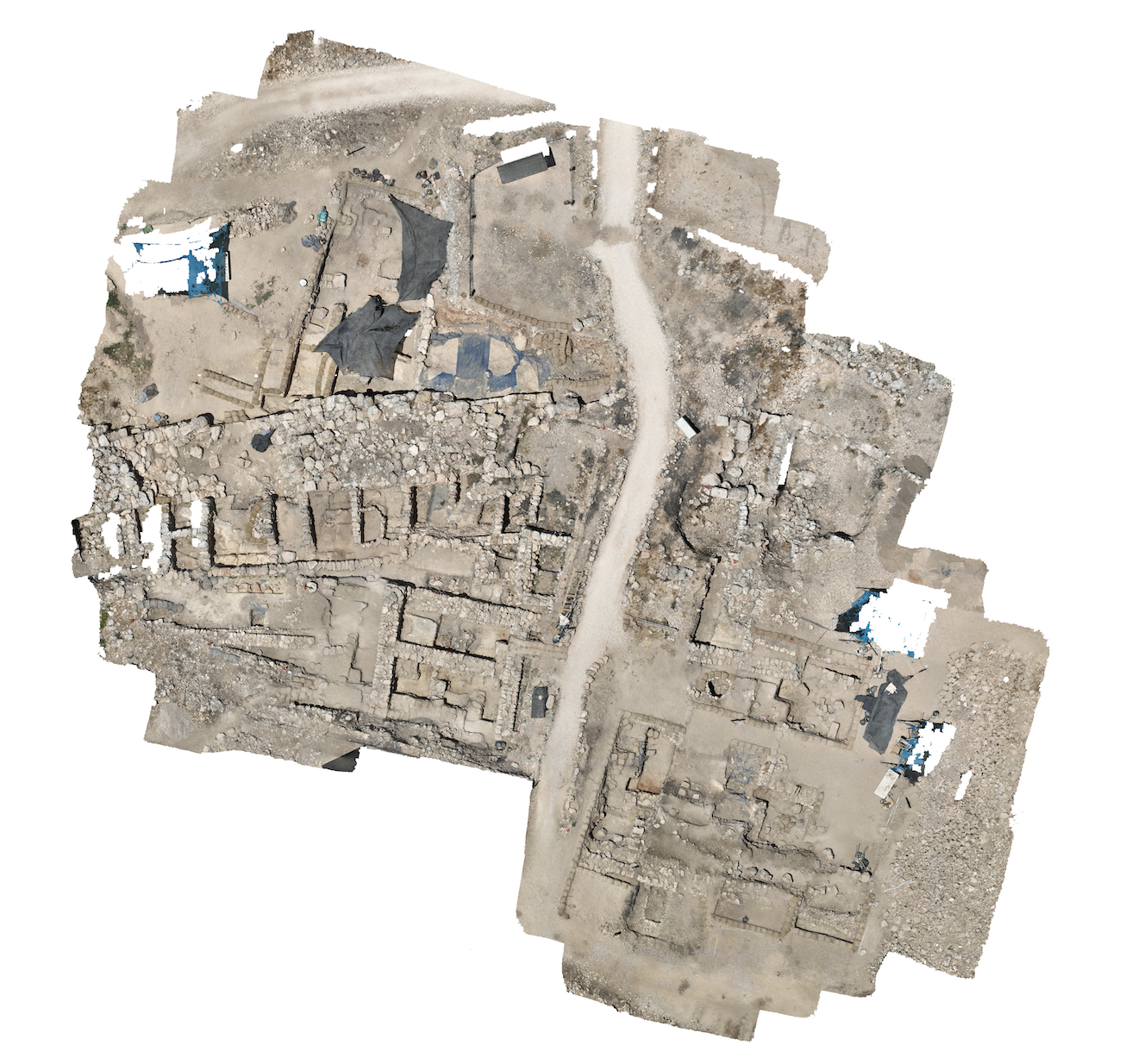
Recent Excavations
Since 2017, the Associates for Biblical Research (ABR) team, under the direction of Scott Stripling and the auspices of the Civil Administration of Judea and Samaria, has been excavating Shiloh’s northern slope. Their work has identified continuous occupation throughout the Middle Bronze Age and Late Bronze Age, with evidence of Israelite settlement beginning to appear in the material record around 1400 BC. Their findings support an early date for the Israelite presence, aligning with fourteenth century BC exodus and a 1406 BC entry into Canaan. This places the establishment of the tabernacle at Shiloh around 1400–1399 BC.
Stripling’s team is also investigating a monumental building on the northern slope of the Tel, which dates to the time of the tabernacle. The walls are oriented east-west and at some points still stand over eight feet tall. With each passing excavation season, the ABR team gathers more evidence that the building they have painstakingly excavated just might be the Israelite sanctuary. In a total of thirty weeks of excavation over seven years, the team has found inside the walls of the monumental building several objects associated with tabernacle worship: ceramic pomegranates, altar horns, and a murex shell. While the Tabernacle was initially a portable tent, archaeological findings suggest that over the course of 300 years, a more permanent structure replaced the temporary tent.
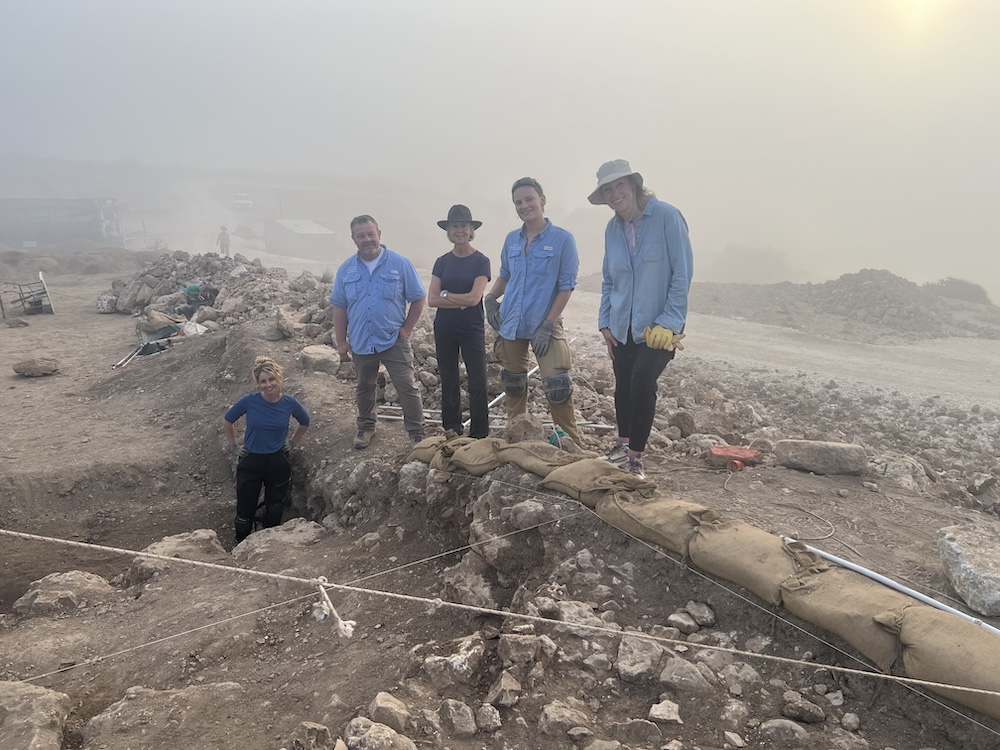
The Dancing Virgins of Shiloh
After serving as the crucial location for the tribal allotments in the book of Joshua, Shiloh does not appear again in the biblical narrative until the grim account of the “dancing virgins” in the last chapter of Judges.
Bible readers already know that the period of the judges was a tumultuous time in Israel’s history. Each of the stories in Judges follows a pattern of widespread sin and rebellion, divine judgment, and supernatural deliverance.
After the death of Joshua, the people forgot the miraculous interventions of their past. In a spiral of spiritual decline, Judges says that “everyone did what was right in his own eyes” (17:6; 21:25). They worshiped idols and followed the ways of their pagan neighbors.
The cycle of sin
Their disobedience and idolatry kindled the anger of the Lord, so He allowed their neighbors to plunder and oppress them (Judges 2:14). It was only when they were in a full state of national distress that they repented and cried out for help. Every time, God raised up a judge—a charismatic military leader—to save them. However, once the judge died, the Israelites would again fall into sin, and the cycle would repeat.
It was in this context that Shiloh reentered the biblical narrative, when a mob of men from the tribe of Benjamin violently assaulted a Levite’s concubine (Judges 19). When the Levite discovered his dead concubine the next morning, he dismembered her body and sent the twelve pieces to the twelve tribes of Israel as a call for them to avenge this heinous crime. A bloody civil war ensued that nearly exterminated the tribe of Benjamin; only 600 Benjamite men survived. All the other Israelite tribes had sworn an oath not to give their daughters in marriage to the surviving men. However, they also did not want the Benjamite tribe to become extinct, which was bound to happen if they could not marry.
A Cruel Solution to a Self-Made Problem
To resolve the problem of their own making, the coalition of tribes devised a cruel plan that would circumvent their oath but also ensure the continuation of the Benjamite line. They instructed the Benjamite survivors to hide in the vineyards around Shiloh. When the young women of Shiloh came out to the fields for a celebratory dance, the Benjamites ambushed them. The whole story reeks of injustice and a complete breakdown of the moral order. Not to mention, the violent abduction tainted Shiloh, the very location of the tabernacle and the ark of the covenant.
God’s covenant with Israel should protect society’s most vulnerable. However, at every turn—whether it was the chopped-up concubine or the kidnaping of virgins—Israel forsook God’s law, choosing death over life. The story of the dancing virgins is the final nail in the Judges’ coffin. It was not God’s initial plan to give Israel a king, but clearly, they needed a leader to fill the political and spiritual vacuum and stop the spiral of degeneration.
Hannah’s Prayer at Shiloh
First Samuel chronicles the end of Eli’s service as high priest and the early life of Samuel. Shiloh, still serving as the Israelites’ central place of worship, is the backdrop for it all.
The book opens with Elkanah and his two wives making a pilgrimage to Shiloh. Elkanah was a Levite from the hill country of Ephraim, and his wives were Peninnah and Hannah. Peninnah had many children, but the Lord had closed Hannah’s womb, a fact Peninnah often used against her. When the family traveled to the sanctuary at Shiloh to worship and offer sacrifices, Hannah was so distressed that she fasted and wept bitterly.
At Shiloh, Hannah entered the tabernacle and begged God for a child. In her anguish, the Bible says Hannah poured out her soul to the Lord. She made a solemn vow: if God would bless her with a son, she would dedicate him to the Lord for his entire life. Eli the priest observed Hannah from the doorpost. When he saw her lips moving without any sound, he assumed she was drunk.
Hannah Conceives
Eli confronted Hannah, but she confessed to him the prayer of her heart. Eli then blessed her and said, “Go in peace, and the God of Israel grant your petition which you have asked of Him” (1 Samuel 1:17). After this interaction, Hannah returned home with renewed hope. She later conceived and gave birth to a son, whom she named Samuel, which means “heard by God.”
True to her vow to God, after the baby Samuel was weaned, Hannah brought him to the tabernacle at Shiloh and presented him to Eli. Along with the baby, she also brought a bull offering, wine, and a flour offering. She said, “For this child I prayed, and the Lord has granted me my petition which I asked of Him” (1 Samuel 1:27). Living under the care of Eli the priest, Samuel grew up serving at the tabernacle. The text states that “Samuel grew, and the Lord was with him and let none of his words fall to the ground” (1 Samuel 3:19). He was a blameless judge, a fervent intercessor for the people, and an anointed prophet.
Ritual and Worship Practices at Shiloh
Hannah’s petitioning of God at Shiloh provides a beautiful example of heartfelt prayer for generations. The two pilgrimages to the tabernacle also offer insight into the ritual and worship practices at Shiloh. Faithful Israelites in the time of the judges made a habit of going to Shiloh annually. They brought enough meat to the Tabernacle so that wives and children could present their own portions and offerings (1 Samuel 1:4), showing that pilgrimages were a family affair.
Sacrificial animals
At Shiloh, archaeologists from Bar Ilan University discovered a deposit of over 3,000 bones from sacrificial animals just east of the monumental building. Excavations at the pit have revealed a large deposit of animal bones. The bones, evidence of cultic sacrifice, are mostly from kosher animals, indicating Israelite worship. Most of the bones came from the right side of the animals. Scott Stripling theorizes that this is further evidence of the Levitical law that the right thigh (or shoulder) of the peace offering was to be reserved for the officiating priest (Leviticus 7:31–34). The sheer quantity of right-side bones from ritually clean animals found in the pit suggests a long and sustained practice of sacrificial worship at Shiloh. Radiocarbon dating of these remains places them within the Late Bronze Age and early Iron Age, the same period the Bible assigns to the Tabernacle’s presence, from Joshua to Samuel.
Storage rooms
Beyond the evidence of animal sacrifices, excavation teams at Shiloh found numerous storage rooms along the interior perimeter of the ancient city’s fortification walls, specifically in the northern part of the tell. Stripling notes that these rooms are unique for an ancient site in Israel, clustered in groups of three or four, and were built against a massive city wall. The storage rooms contained a significant amount of pottery, specifically collared-rim jars characteristic of the Israelite settlement period. This finding aligns with the fact that Hannah brought a wine and flour offering to the tabernacle. Stripling suggests that these jars stored the tithes and other commodities that pilgrims brought on their annual pilgrimage.
It’s also clear from Hannah’s prayer in the tabernacle that individuals, including women, were allowed access to some portion of the sanctuary to make direct petitions to God. This stands in contrast to the more restricted access to the later temple in Jerusalem. Priests must have stood nearby to interact with the worshippers.
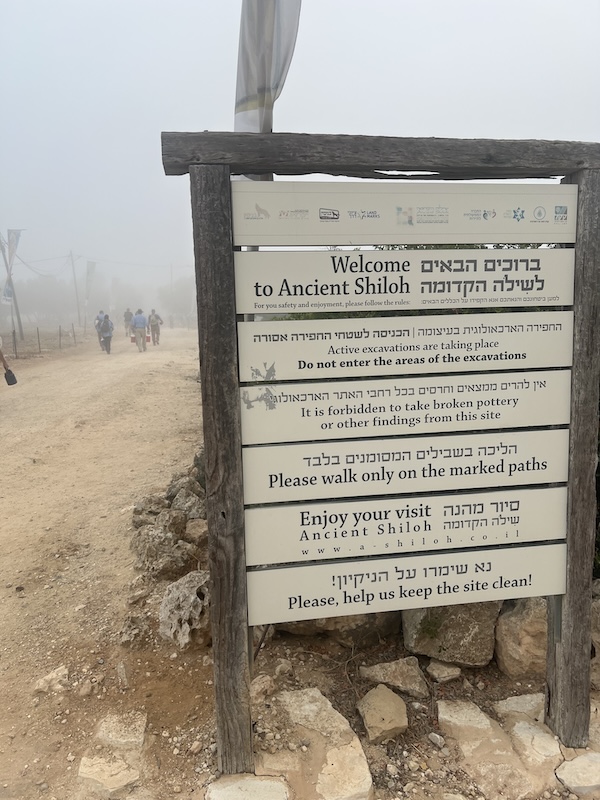
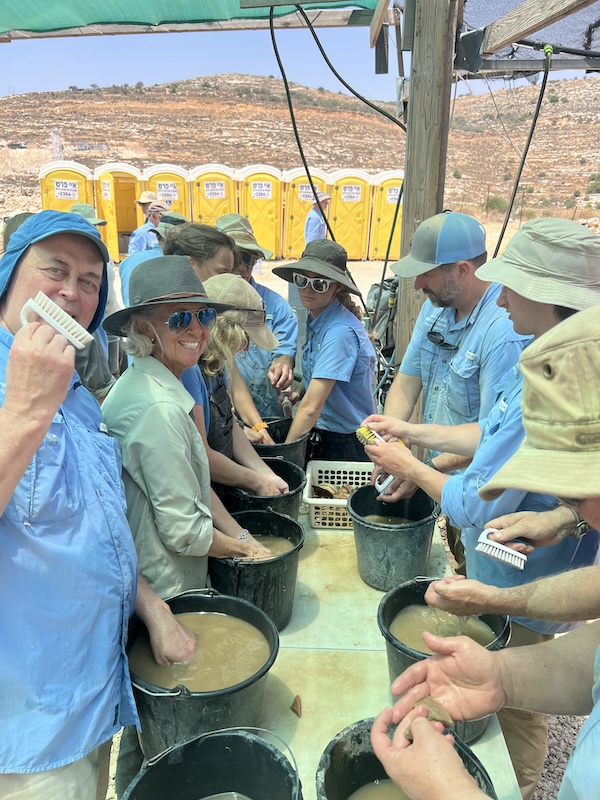
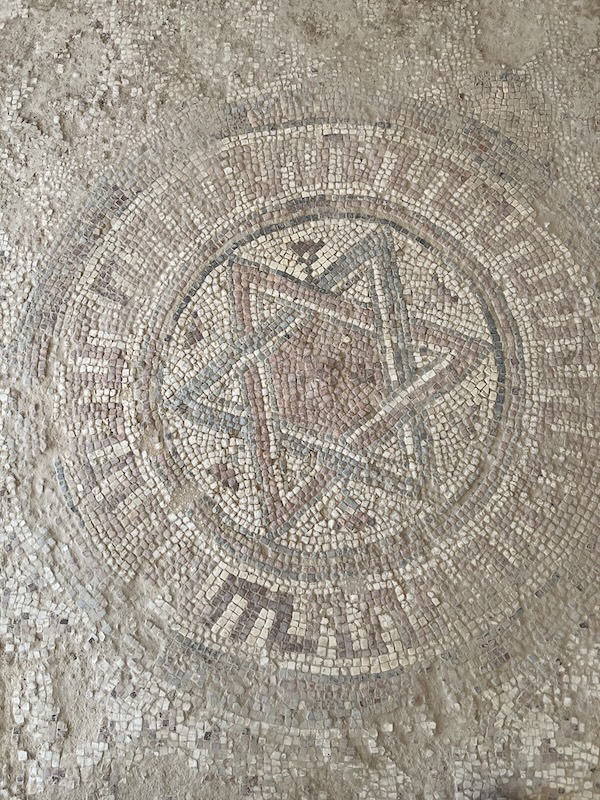
Samuel’s Calling and the End of Eli’s House at Shiloh
As Samuel grew up, he continued to serve the Lord faithfully at Shiloh under Eli’s mentorship. Meanwhile, Eli’s own sons, Hophni and Phinehas, were corrupt and worthless men who forgot the Lord (1 Samuel 2:12). Their corruption was a major source of God’s displeasure with Israel.
Eventually, the Lord spoke directly to young Samuel. One night, Samuel kept hearing a voice calling his name, repeatedly mistaking it for Eli’s until the old priest finally realized the call had to be from the Lord. Eli instructed Samuel that the next time he heard the voice, he should respond, “Speak, for Your servant hears” (1 Samuel 3:10). Samuel obeyed, and God delivered a severe message through him. When the message was complete, Eli insisted that Samuel tell him everything, saying, “Please do not hide it from me. God do so to you, and more also, if you hide anything from me of all the things that He said to you” (1 Samuel 3:17). Samuel, having no choice, revealed the prophecy. God warned Samuel that He could no longer tolerate the wickedness of Hophni and Phinehas and was about to punish them.
The fulfillment of this prophecy occurred when the Philistines defeated Israel in battle and captured the ark of the covenant. Upon hearing the news of the ark’s capture and the deaths of his sons, Eli fell backward from his chair and died. This catastrophic event marked the end of an era, specifically the end of the priesthood at Shiloh. With the ark taken and Eli’s corrupt house judged, the tabernacle lost its sacred purpose. After these events, Samuel relocated his ministry to his hometown of Ramah, where he continued to judge Israel and eventually anointed its first king.
Shiloh’s Destruction
After these events, Shiloh largely disappeared from the biblical narrative. While the Bible does not explicitly state how Shiloh was destroyed, it strongly implies its devastation following the disastrous battle at Ebenezer (1 Samuel 4:1–7:2). In that battle, the Philistines soundly defeated Israel, captured the ark, and killed Eli’s two sons. Though the biblical text then shifts focus to the ark’s journey and subsequent return, Shiloh mysteriously ceases to be a central location.
Excavation teams at Shiloh have documented a significant destruction layer, characterized by burnt floors, collapsed bricks, and evidence of a fierce conflagration. Radiocarbon dating of materials from this layer has yielded a date of approximately 1075 BC, which aligns precisely with the biblical timeline for a Philistine destruction. This finding is a significant corroboration of the biblical account, providing a concrete archaeological timestamp for Shiloh’s demise. The capture of the ark, the very symbol of God’s presence, would have rendered the sanctuary meaningless and certainly a target for destruction by the victorious Philistines, who both revered and feared the ark (1 Samuel 4:7–8).
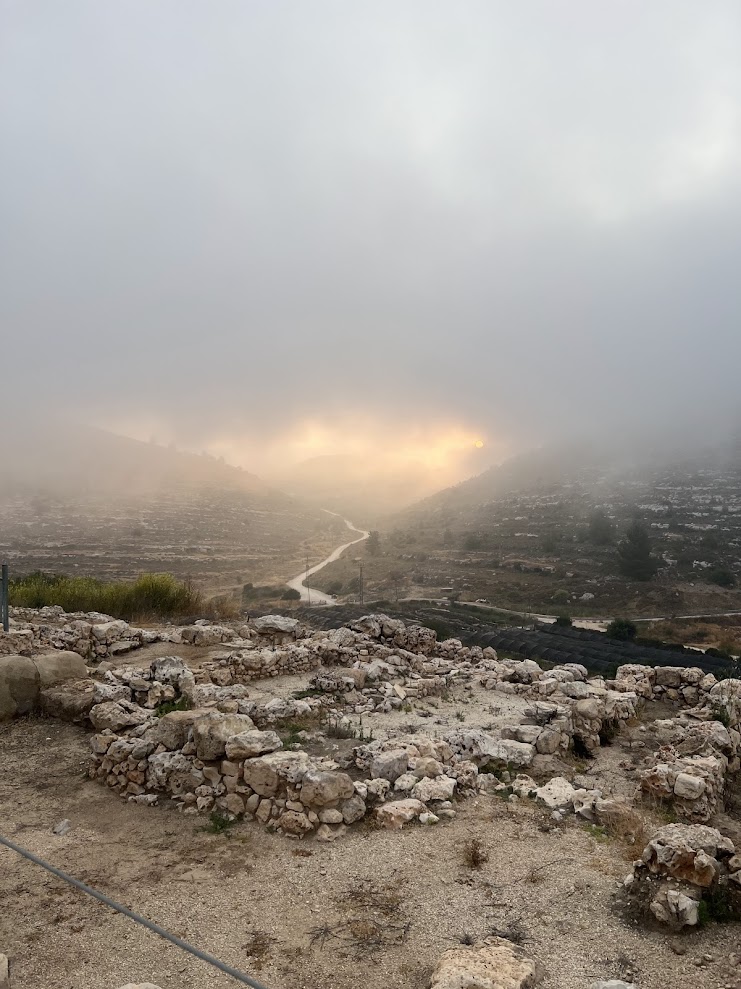
The Legacy of Shiloh in the Bible
Shiloh’s demise became a prophetic cautionary tale for future generations of Israelites, serving as a prime example of what happens to a people and a place that forget God and disregard the covenant. The memory of Shiloh’s destruction is explicitly mentioned by the prophet Ahijah in 1 Kings 14:4. More significantly, both Psalm 78:60 and Jeremiah 7:12–14 look back to Shiloh as a potent example of divine judgment.
Psalm 78, recounting Israel’s history of rebellion, laments, “He forsook the tabernacle of Shiloh, the tent He had placed among men” (v. 60). The psalmist directly linked God’s abandonment of the site to the people’s disobedience. Similarly, Jeremiah, in a dire warning to the people of Judah, declared:
But go now to My place which was in Shiloh, where I set My name at the first, and see what I did to it because of the wickedness of My people Israel. And now, because you have done all these works, says the Lord, and I spoke to you, rising up early and speaking, but you did not hear, and I called you, but you did not answer, therefore I will do to this house, which is called by My name—in which you trust—and to this place which I gave to you and your fathers, as I have done to Shiloh. (Jeremiah 7:12–14)
The destruction of Shiloh was a stark reminder that the blessing of God’s manifest presence was conditional on obedience. However, while God may have allowed Shiloh’s destruction at the hands of the Philistines, His covenant promises to His people are eternal. The judgment on Shiloh was a painful, corrective act within an unbreakable relationship.
Conclusion
The story, however, does not end with Shiloh’s devastation. Even after Shiloh was eclipsed by Jerusalem, and the Jerusalem temple was twice destroyed, God never revoked His covenant with Israel or withdrew His gaze from His chosen people and their land. If you visit the archaeological site of ancient Shiloh today, you see modern Shiloh right across the valley. Modern Shiloh is a community of 5,000 people, many of whom made Aliyah from the United States, Russia, France, and South America, and the area boasts vineyards, olive groves, preschools, gymnasiums, and even a synagogue built like the tabernacle.
The Jewish people who have returned to this specific piece of land is a story of redemption. They have reclaimed the site that for centuries was Israel’s sacred center. They have returned to the place where God heard Hannah’s prayers and spoke directly to his servant Samuel.
Jeremiah’s prophetic imperative to “Go now to my place . . . in Shiloh” has taken on new meaning.
See significant locations in the Bible for yourself—and watch your Bible come alive! Join an ICEJ USA tour to Israel.
Related Articles
Who Wrote the Dead Sea Scrolls? An Ancient Mystery Unsolved
Israel’s National Rebirth and the Dead Sea Scrolls
Mount Ebal Amulet Affirms Israelite Worship of “Yahweh”
Israelis Excited over Hezekiah Inscriptions – Old and New


